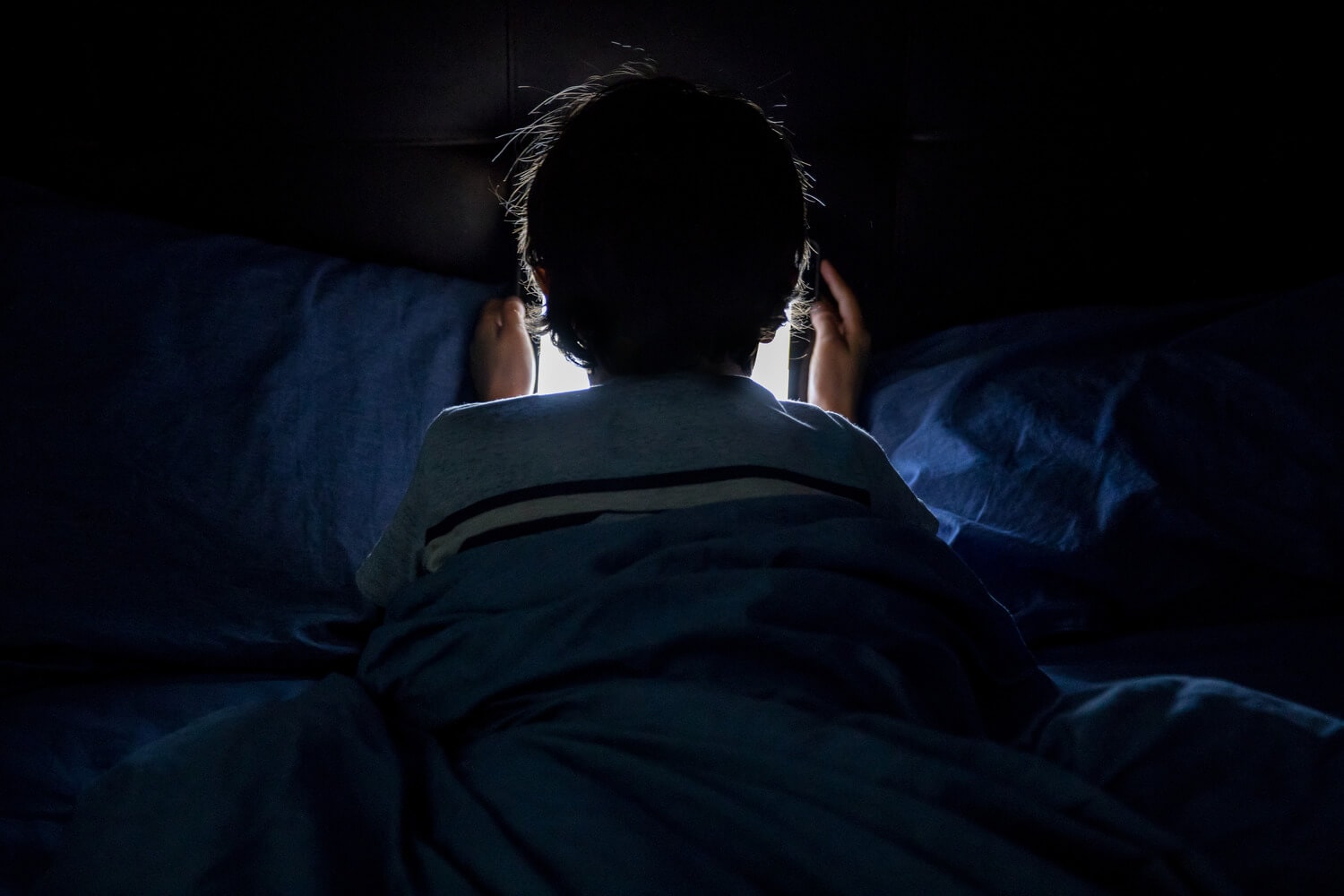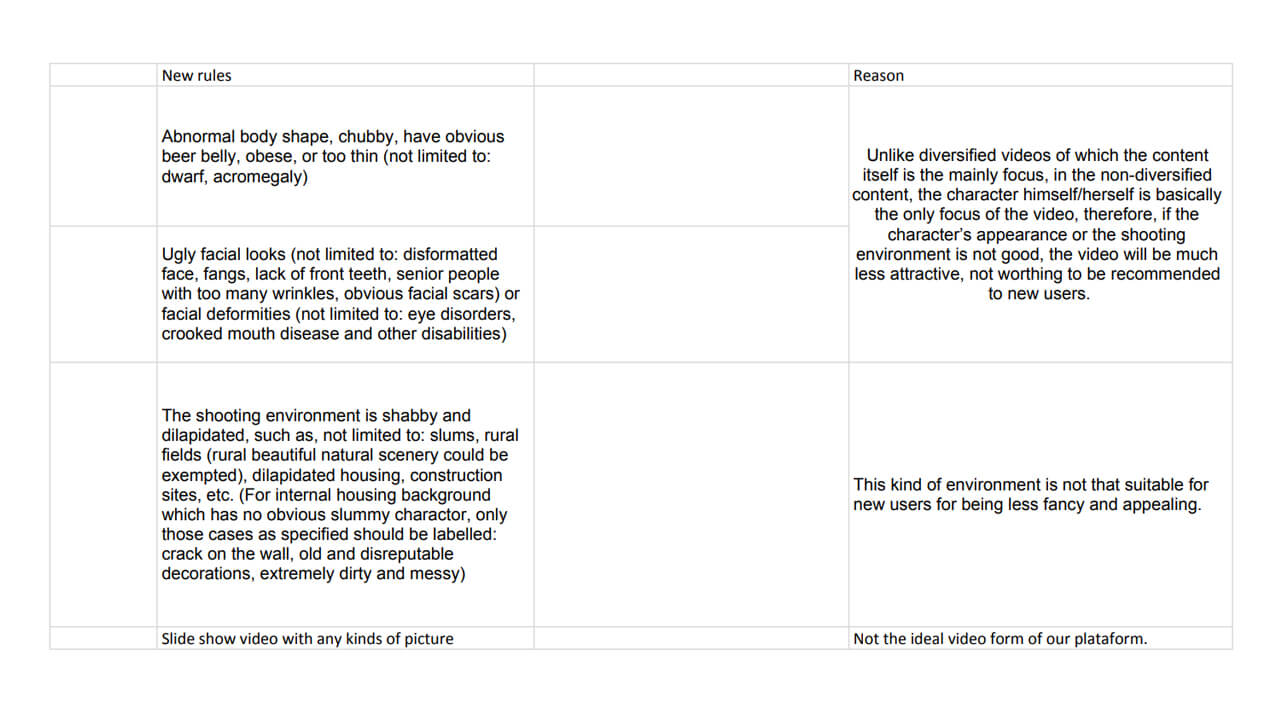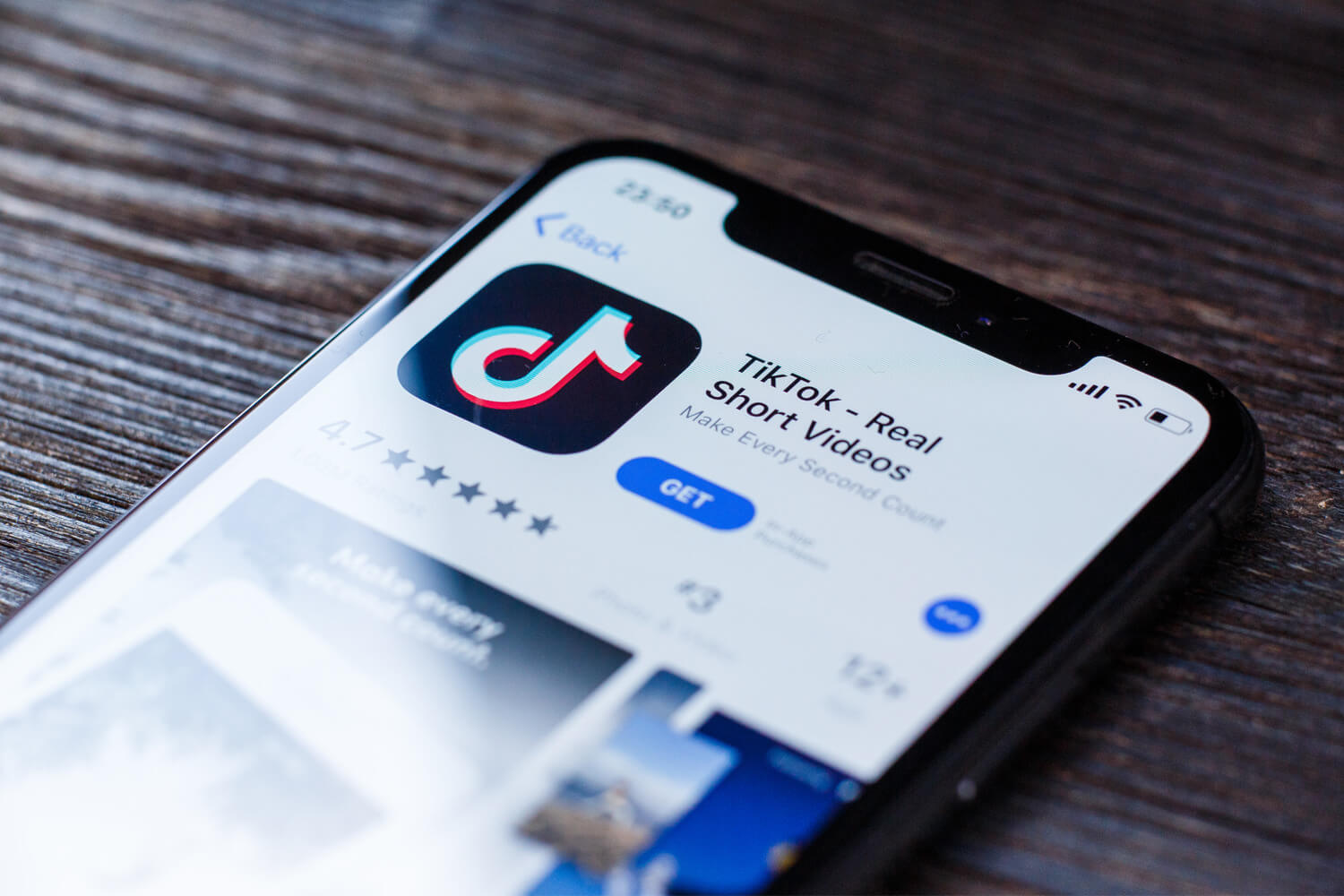Forget Facebook and Twitter. Those belong to “the olds.” For Generation Z, everyone who’s anyone is on TikTok.
The video-sharing social networking service has been downloaded more than 2 billion times globally, and it’s currently the second most popular app on both Google Play and the Apple App Store.
10 Things You Should Know Before Your Kids Download TikTok
Unfortunately, it’s more than just viral trends like the “Wipe It Down” challenge and hilarious dance videos.
The app has a dark side that many parents don’t know about, and it’s one you need to familiarize yourself with before you let your kids download it to their iPhone or Android devices.
#1: TikTok is a data company – NOT a social network.
The first thing you should know about TikTok is that although the app is a social network, social networking is not the company’s real “business.”
While individual apps feature varying degrees of privacy, there’s a common denominator behind all “free” social media platforms. At the risk of oversimplification, all companies exist to make money, so if they’re not selling a product to you, they’re selling you as a product.
In the case of TikTok, developer ByteDance aims to sell your child’s eyeballs and attention to advertisers. That may not sound like a big deal, but the way ByteDance does that is by collecting data from its users. And – like most “free” social media apps – TikTok collects a lot of data, even about users younger than age 13.
Government regulations restrict data collection to some extent, but they’ll never change the fact that a “free” social media app’s incentive structure will often be at odds with your desire to protect your child’s privacy.
This is a vital consideration as you evaluate whether TikTok is safe for your kids.
#2: It’s filled with inappropriate content – and it’s ridiculously easy to find.

Like all mainstream social media services, TikTok features community guidelines to bar users from sharing illegal or inappropriate content. This doesn’t mean we should trust that these guidelines alone will protect our kids from encountering inappropriate or even dangerous content when using the app.
TikTok does not have employees who manually approve each and every video before they are published. Instead, the service relies on algorithms to filter out clips that violate its community guidelines.
Yet illegal and inappropriate material will always slip through the cracks, especially because malicious users are constantly inventing ways to evade the content filters.
For example, a search for an obvious term like “porn” yields no video results. That doesn’t mean the app isn’t a gateway to online pornography and other questionable content. Use the right search term, and your kids will find plenty of sexually suggestive videos at their fingertips, including clips of porn stars. Those porn stars may be (partially) clothed on TikTok, but their profile pages include links to other websites where they are not.
And that’s really just the tip of the iceberg. From minors lip-syncing and dancing to sexually explicit lyrics to kids promoting violence and talking about self-harm to extremists spreading racist propaganda, there’s no shortage of evidence that TikTok has a dark side. And that underbelly is not as hard to find as many parents would think.
To illustrate this, I pulled up the app on my smartphone. Within just a few minutes, I was able to find multiple videos that made my skin crawl.
In one, a girl who appeared to be a minor was walking beside a busy street. As traffic raced by, she said:
Listen, I’m not trying to turn you guys on, but what if I walked into the road and got hit by a car, because it’s so easy for that to happen right now. But I’m not trying to like, be a tease or anything.
I think she was joking, but it made me feel sick to the pit of my stomach. It’s far darker than the light-hearted fare featured on the app’s marketing materials. And it’s not the type of content I want my kids stumbling across on a social networking platform.
I don’t know whether this particular clip slipped through TikTok’s filters or just didn’t explicitly violate any of the community guidelines. Clips like this are not hard to find. And let’s face it: A corporation likely has a wildly-different definition of what qualifies as age-appropriate content for your children than you do.
#3: Child predators use it to groom and prey on unsuspecting minors.
Given how many kids and teenagers use TikTok, it’s not surprising that child predators have identified it as a way to groom minors for sexual exploitation.
A 2019 BBC investigation exposed “hundreds of sexually explicit comments… on videos posted by children as young as nine.” This criminal behavior obviously violates TikTok guidelines, and the company says it’s determined to create a “safe and positive app environment” for all users, especially children.
According to the BBC, that claim has dubious support. Some of these abusive comments remained live – even after the researchers reported them to TikTok. And many of the predatory accounts appeared to be repeat offenders.
To be sure, this is not just a TikTok problem, but several things about the app make it particularly dangerous. The ability to create anonymous accounts with nothing more than an email address makes its “zero-tolerance policy” for sexual exploitation tenuous at best.
And the way TikTok’s algorithm identifies what type of content users like so that the app can give them a personalized experience makes it even easier for pedophiles and other predators to identify potential victims.
#4: TikTok isn’t just plagued with cyberbullying. It’s allegedly made the problem worse.
Cyberbullying is a threat to your child no matter what social media app they use, but a bombshell investigation by The Intercept revealed that TikTok might have been engaging in cyberbullying behavior itself, at least behind the scenes.
The publication uncovered internal policy documents that allegedly reveal that ByteDance instructed TikTok moderators to prevent videos of people who were “too ugly, poor, or disabled” from being featured on the app.
Here’s one page of the English-language version of the document.

ByteDance’s response to the allegations – that they “represented an early blunt attempt at preventing bullying, but are no longer in place” – doesn’t do much to allay my concerns.
#5: Its developer has already been embroiled in enough privacy and security scandals to make Facebook blush.
It’s only been two years since ByteDance released TikTok worldwide, but the app has already racked up enough privacy and data security scandals to make Facebook blush.
An alphabet soup of global regulatory agencies have launched investigations into allegations that TikTok violated children’s privacy. In 2020 alone, the app has been the subject of probes from the Dutch Data Protection Authority, the European Data Protection Board, and the U.S. Federal Trade Commission.
More generally, researchers have exposed several shocking security flaws in the app. In January 2020, Check Point Research disclosed vulnerabilities that allowed attackers to:
- Take control of users’ accounts by sending them a private message with a malicious link and tricking them into clicking it.
- Expose sensitive personal information, including birthdates, email addresses, and payment information.
That’s not all. TikTok has been caught secretly reading user clipboards on multiple occasions – including after it claimed the “problem” had been fixed.
If your child’s TikTok account has been hacked, read our easy-to-follow guide on how to recover it.
Data security isn’t the only thing messy about ByteDance’s ties to Beijing. Beyond discriminating against “ugly” users, reports allege the Beijing-based company simultaneously censored videos that reflect poorly on the Chinese Communist Party.
In 2019, the Guardian revealed documents demonstrating that the company instructed moderators to target content that opposed China’s foreign policy aims. Controversial topics like Tienanmen Square, the Hong Kong Protests, and the China-India border skirmishes have all reportedly been deemed inappropriate for TikTok users. According to the Washington Post, final decisions about what content to block come straight from ByteDance headquarters in Beijing.
And while ByteDance has repeatedly downplayed its links to the Chinese government, users have read between the lines. A troubling Wall Street Journal article from June 2020 profiled the growing trend of aspiring TikTok celebrities who produce pro-China propaganda, hoping it will earn favored status from ByteDance’s algorithm. Whether this actually works is beside the point; what’s clear is that the company’s ties to Beijing influence the content users create.
#6: TikTok has settings that are terrible for child privacy – and many of them are enabled by default.
With this disconcerting history, it’s unfortunately unsurprising that TikTok has settings that are anathema to child privacy.
Many of those privacy-smashing settings are configured by default. For example, the app will automatically recommend profiles “to users interested in accounts like yours.”
These features will be enabled by default when your child creates a TikTok account too:
- Anyone can download videos your child makes.
- Anyone can comment on and react to their videos.
- Anyone can take your child’s videos and “Stitch” them into one of their own videos.
- Anyone can use your child’s videos to create a TikTok Duet.
- Anyone on your child’s Friends list can send them private messages.
- The app will serve your child personalized ads based on their user activity.
And remember, those are just the settings that are enabled by default. With just a few taps of their finger, TikTok can become an even less safe environment for your child.
Within seconds, they can configure their account so that:
- Anyone can send them a private message.
- Anyone can view what videos they have “liked.”
- TikTok does not automatically filter out offensive comments.
The app even includes an option to allow advertisers to “feature” your videos in their ads.
#7: TikTok doesn’t even try to perform age verification.
TikTok has a “safe” mode called Younger Users that provides a heavily-restricted version of the app to users younger than age 13. And it requires that all users under age 18 obtain parental consent when registering an account.
The problem is that all you need to register an account is a phone number, email address, or social media profile. ByteDance makes no effort to verify that users are as old as they say they are.
So unless you actively monitor your child’s smartphone usage, they can easily download TikTok and sign up for an adult account without your knowledge or permission.
#8: Your kids can use TikTok without creating an account – or even downloading the app!
What’s even more troubling is that although your kids can’t post to TikTok without creating an account, they can search for and watch almost any video on the app without registering. Only live videos are excluded.
This means that anyone – including young children – can download TikTok from Google Play or the Apple App Store and have unfiltered access to all of the questionable content outlined above.
(And even if you restrict your child’s ability to download apps, there are numerous websites that allow anyone to watch TikTok videos.)
#9: The TikTok app has parental control settings. It’s your responsibility to use them.
The good news is that the TikTok app does feature a growing number of parental control settings that can help keep your children safe, but it’s your responsibility to use them.
In February 2020, TikTok introduced Family Pairing, which allows parents to link their TikTok accounts to their kid’s and assert control of several important safety settings. From the Digital Wellbeing screen, you can:
- Restrict your child from viewing “content that may not be appropriate for all audiences.”
- Limit who can send private messages to your child (or disable direct messaging completely).
- Limit how much time your child can spend on TikTok each day.
Family Pairing is a major improvement over the child safety features previously available, but it has multiple drawbacks.
First, Restricted Mode might filter some content, but at least as of this article’s most recent update, it did not filter the type of videos most parents would think it would.
I activated the feature on my own smartphone as a test, and the third video that auto-played on the home screen featured vulgar language (as did many after it). One of the next clips showed a man holding a cucumber and lip-syncing to the lyrics, “I think you know, where this about to go.” And that wasn’t the only one to feature thinly-veiled sexual innuendo.
Worse, the app made no effort to restrict my ability to search for and view hashtags, even ones advertising explicitly mature themes like #adultsonly18 and #NSFW.
Second, the child account can disable Family Pairing at any time, although deactivating the feature will send a notification to the parent’s phone.
Finally, Family Pairing settings leave much to be desired. Thankfully, you can assert more control of your child’s privacy, but you’ll have to do it on their device and trust that they won’t guess your passcode.
For maximum privacy and security, open the Privacy and Safety page and then configure the following settings.
Under Discoverability:
- Toggle Private Account to on.
- Toggle Suggest Your Account to Others to off.
Under Personalization and Data:
- Make sure Ad Authorization is toggled to off (this is the default setting).
- Click on Personalization and Data and then toggle Personalized Ads to off.
Under Safety:
- Turn Allow Your Videos to Be Downloaded off.
- Turn Who Can Send You Direct Messages to no one.
- Turn Who Can Stitch or Duet with Your Videos to no one.
- Turn Who Can React to Your Videos to no one.
- Make sure Who Can View Your Liked Videos is set to Only me (default setting).
- Turn Who Can Comment on Your Videos to no one.
- Make sure Comment Filters is set to on (default setting).
(Many of these settings can be set to Friends. Using this setting will require you to monitor who your child is adding to their Friends list.)
#10: Your kids might not like them.
Configuring TikTok for maximum privacy will make the social media app a much safer environment for your kids, but it still won’t necessarily prevent them from viewing content you don’t think is appropriate.
And, especially if your child is an older teen, they may bristle at these restrictions. After all, the very nature of the app encourages users to interact with as many users as possible so they can accumulate followers and become a TikTok celebrity. (Remember what we said about the app’s incentive structure conflicting with your responsibility to keep your kids safe?)
Still, the tragic reality is that kids often fail to realize how dangerous TikTok and other social media apps can be until it’s too late.
Is TikTok Safe for My Children to Download?

As cliche as it sounds, the best way to keep your children safe from the seedy side of TikTok is to prohibit them from downloading the app at all. Of course, that’s not a practical decision for many families, and banning your kids from one app isn’t going to make sure that they stay safe online.
Unfortunately, the digital world can often be just as harrowing as the real one. And just as you wouldn’t turn your children loose in a strange city, you shouldn’t allow them to traverse the web without the education and tools they need to stay safe.
Regularly engage in frank (and age-appropriate) discussions with your children about the dangers of the internet and why it’s important to protect your personal information – even when using a mobile app as superficially-innocuous as TikTok.
Hacked.com’s resources and tutorials are an excellent place to start. If you need an extra level of support, contact us to find out more about how we can help your entire family stay safe online.
TikTok image by Ascannio from Shutterstock.com